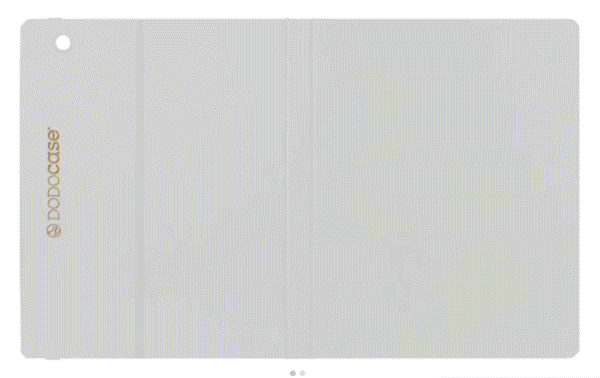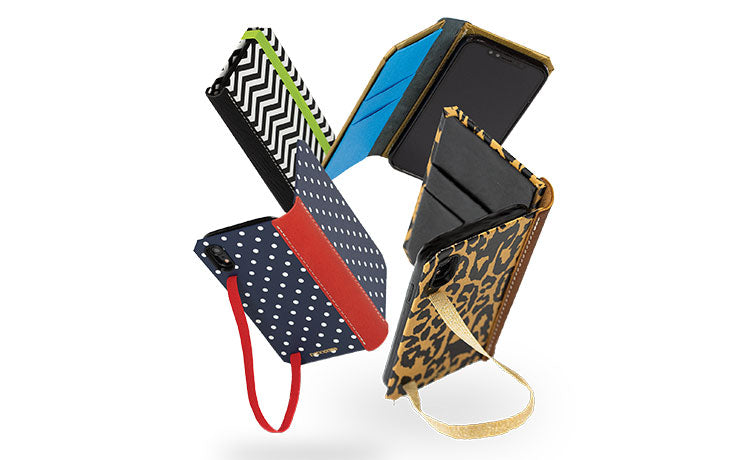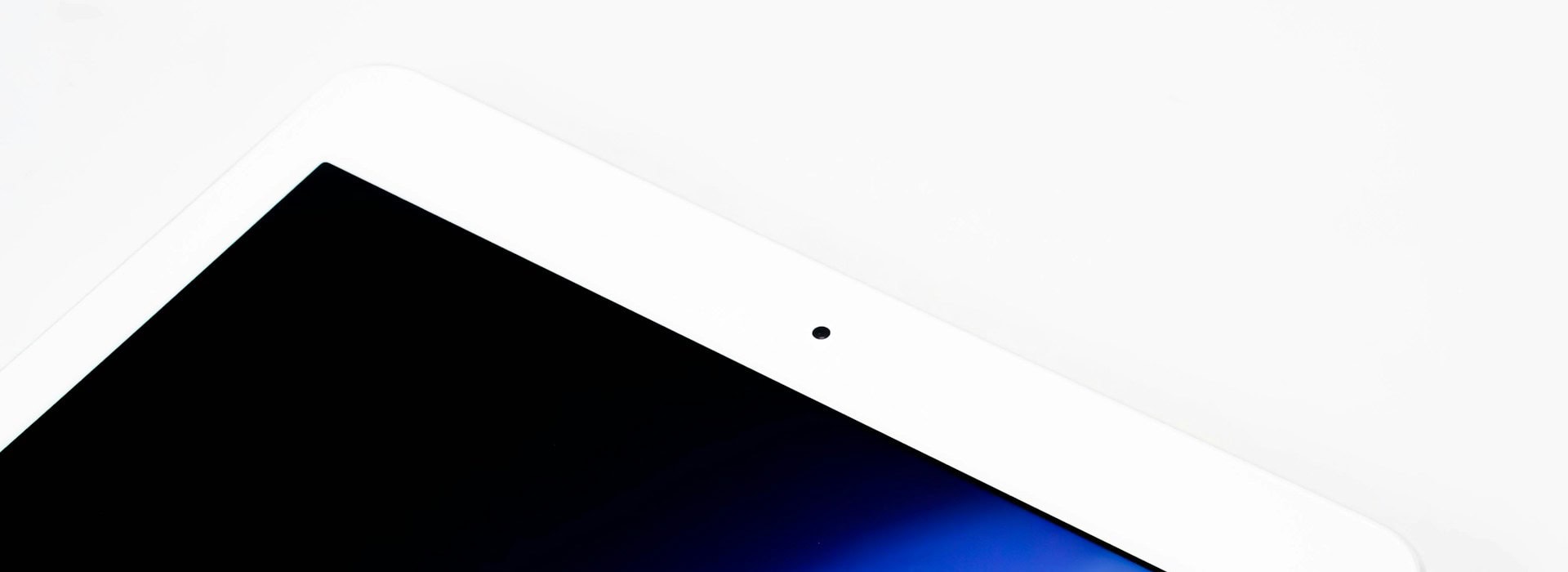Removing a cracked or peeling screen protector from your iPad can feel like a high-stakes operation. One wrong move with a sharp tool or too much force could leave a permanent scratch on the expensive display underneath.
The internet is filled with risky advice, from using metal pry tools to overheating the device. This guide cuts through the noise; it provides a methodical, safe approach tailored to different protector types, including tempered glass and plastic films.
You will learn how to use simple household items to lift edges, manage stubborn adhesives, and handle shattered glass without damaging your screen or injuring yourself.
Preparation and Safety
A controlled environment and the right tools are crucial for a clean removal that prevents scratches on your iPad's display. Using non-metal implements is essential, as metal can easily cause permanent damage.
Special care is also required if the screen protector is cracked, because loose glass fragments can be a safety hazard.
Workstation Setup
Before beginning the removal process, prepare your workspace and device to ensure a safe and effective outcome. A few simple steps can prevent common mistakes.
- Power down the iPad completely to prevent any accidental screen inputs.
- Work on a flat, stable, and well-lit surface that is free of dust and other debris.
- Wash and dry your hands thoroughly to avoid transferring oils or dirt onto the screen.
Required Tools
Gathering your tools beforehand will ensure the process goes smoothly. You will need several common household items.
- A thin plastic card, such as a credit card or gift card, to slide under the protector.
- A soft, clean microfiber cloth for wiping the screen afterward.
- A hairdryer for applying low, indirect heat if the adhesive is stubborn.
- Isopropyl alcohol with a concentration between 70% and 80%.
- Low-tack tape, like painter's tape, to help lift a corner without leaving residue.
Precautions for Cracked Protectors
If the screen protector is shattered or has significant cracks, take the following extra safety measures to protect yourself and the device.
- Wear protective gloves to shield your hands from any sharp glass edges.
- Apply strips of tape across the entire surface of the cracked protector. This will bind the shards together and allow you to peel the protector off in one piece.
Identifying the Protector Type

Knowing what kind of screen protector is on your iPad is the first step toward a safe removal. Different materials, including plastic film, tempered glass, and hydrogel, have distinct physical properties.
Misidentifying the type can lead you to use an incorrect technique, potentially complicating what should be a straightforward process.
Plastic Film
Plastic film protectors are characterized by their thinness and flexibility. If you run your finger over the edge, it will feel like a very thin, pliable layer of plastic.
These protectors often feel slightly soft to the touch and are more susceptible to scratches and scuffs than their glass counterparts. When viewed at an angle, the surface may show a subtle texture or a slight "orange peel" effect that distinguishes it from the perfectly smooth glass underneath.
Tempered Glass
Tempered glass protectors are rigid and significantly thicker than plastic films. They feel exactly like the iPad's native screen, offering a smooth, hard surface for your finger to glide across.
Tapping on it produces a sound similar to tapping on the actual display. You can often identify a tempered glass protector by its noticeable edge around the home button or camera cutouts, which will have a distinct, non-flexible thickness.
Hydrogel and Liquid Protectors
Hydrogel protectors are made from a soft, flexible material that has a unique, almost rubbery feel. They are known for their self-healing properties, where minor dents or scuffs may seem to disappear over time.
Hydrogel feels much softer than tempered glass and is more pliable than a standard plastic film. Liquid protectors, on the other hand, are entirely different.
They are not a separate physical layer but a chemical coating bonded to the screen. As a result, there is no discernible edge or layer to feel; the screen looks and feels completely bare, making it an important distinction to recognize before attempting removal.
Removal Methods by Protector Type

The principle behind a successful removal is using gentle, even motions and avoiding metal tools at all costs. Minimal heat should only be applied when absolutely necessary to soften the adhesive at the edges of the protector.
When using a plastic card, always keep it shallow and parallel to the glass to avoid digging into the display itself.
Removing a Plastic Film Protector
Plastic films are generally the most straightforward to remove because of their flexibility. The adhesive is typically less aggressive than that used on tempered glass.
- Start by attempting to lift one of the corners with your fingernail. If this proves difficult, apply a piece of strong tape, like packing tape, to a corner and use it to pull the film upward.
- Once a small section is lifted, slide a plastic card into the gap.
- Slowly push the card forward while peeling the protector back along a single axis. Maintain a slow and steady motion to prevent tearing the film or leaving behind significant adhesive residue.
Removing a Tempered Glass Protector
Tempered glass is rigid and requires a more delicate touch to prevent it from cracking during the removal process. Applying gentle heat can make a significant difference.
- If a corner will not lift easily, use a hairdryer on its lowest heat setting. Hold it about six to eight inches away from the iPad and warm the corner for approximately 10 to 30 seconds to soften the adhesive.
- Carefully use your fingernail or the edge of a plastic card to pry up the warmed corner.
- Once you have lifted the edge, slide the plastic card underneath. Slowly and evenly advance the card across the screen to separate the glass from the display.
Dealing with Stubborn Adhesives
If a corner refuses to lift even with gentle prying and low heat, a couple of alternative methods can provide the leverage you need without resorting to excessive force.
- Use a piece of dental floss. Work the taut floss under a corner and use a gentle back-and-forth "sawing" motion to cut through the adhesive layer as you pull it across the screen.
- Create a stronger grip with tape. Apply a piece of durable, low-tack tape (like painter's tape) to a corner, leaving a "handle" hanging off the edge. Press it down firmly, then pull up on the handle to lift the protector.
Handling Cracked or Stuck Protectors

A cracked screen protector presents a unique challenge because the glass can splinter as you apply pressure to remove it. Similarly, a protector with extremely stubborn adhesive requires careful handling to avoid damaging the display.
In either scenario, the solution is not to escalate force but to reassess the situation and use a more controlled method, such as applying low heat or an alternative leverage aid.
Managing Shards from a Cracked Protector
When a glass protector is shattered, it can break into numerous sharp fragments during removal. To prevent cuts and keep these shards from scratching the screen, you must bind the surface before you begin.
- Apply overlapping strips of painter's or packing tape across the entire surface of the protector. This effectively turns the shattered pieces into a single sheet.
- Wear protective gloves during this process to shield your hands from any sharp edges that might be exposed as you lift the protector.
Applying Heat Safely
For a protector that will not lift at the corners, controlled heat can help soften the underlying adhesive. It is critical to follow this process carefully to avoid damaging the device.
- Use a hairdryer on its lowest possible heat setting.
- Hold the hairdryer six to eight inches away from the iPad's screen to prevent overheating.
- Apply heat in short increments, warming a stubborn corner for no more than 15 to 30 seconds at a time before gently testing the corner again.
Knowing When to Stop
There are moments when a screen protector simply will not come off without extreme resistance. If you have tried using plastic tools, alternative aids like dental floss, and the careful application of low heat, but the protector remains firmly bonded, it is time to stop.
Continuing to increase force or heat beyond these safe methods puts your iPad's actual screen at high risk of permanent damage. In these situations, the most prudent action is to discontinue your efforts and consider seeking professional assistance from a reputable repair technician.
Post-Removal Cleanup and Preparation

After the old protector is off, the final steps are to clean the screen thoroughly and prepare it for either a new protector or regular use. Any leftover adhesive residue is common but easily handled with the right technique.
Creating a dust-free environment is essential for a bubble-free application of a replacement protector.
Removing Residue and Fingerprints
- Lightly dampen a corner of a clean microfiber cloth with 70–80% isopropyl alcohol. It is crucial to never spray or pour liquid directly onto the iPad's screen.
- Gently wipe the display using light, circular motions to lift away any remaining adhesive residue, smudges, and fingerprints.
- Allow the alcohol to evaporate, which will leave a clean, streak-free surface. If using a screen-safe cleaner, apply it to the cloth first, not the screen.
Inspecting the Bare Display
- In a well-lit area, tilt the iPad at various angles to carefully inspect the glass for any damage the old protector might have masked, such as fine scratches or small chips.
- Power the device on and test the touch responsiveness across the entire screen.
- Confirm that there are no dead spots or touch irregularities that were not present before the removal.
Preparing for a New Installation
- Choose a clean, well-lit, and dust-free area to work in. A steamy bathroom is an excellent option, as the moisture helps reduce airborne dust.
- Lay out all the tools from your new screen protector kit, including the alignment frame, dust-removal stickers, and cleaning wipes, so they are within easy reach.
- Work efficiently to minimize the time between the final cleaning and the application, which is the best way to prevent dust from settling on the screen.
Conclusion
Successfully removing an iPad screen protector comes down to method and patience, not brute force. The process hinges on first identifying the protector material to select the appropriate technique.
Using plastic tools for gentle leverage, applying minimal heat only when necessary, and carefully managing shards from a cracked screen are the fundamentals of a safe removal. The final, critical phase involves a meticulous, residue-free cleaning of the display.
Preparing a dust-controlled environment afterward ensures the screen is in pristine condition, ready for a flawless new application or to be used in its natural state.



